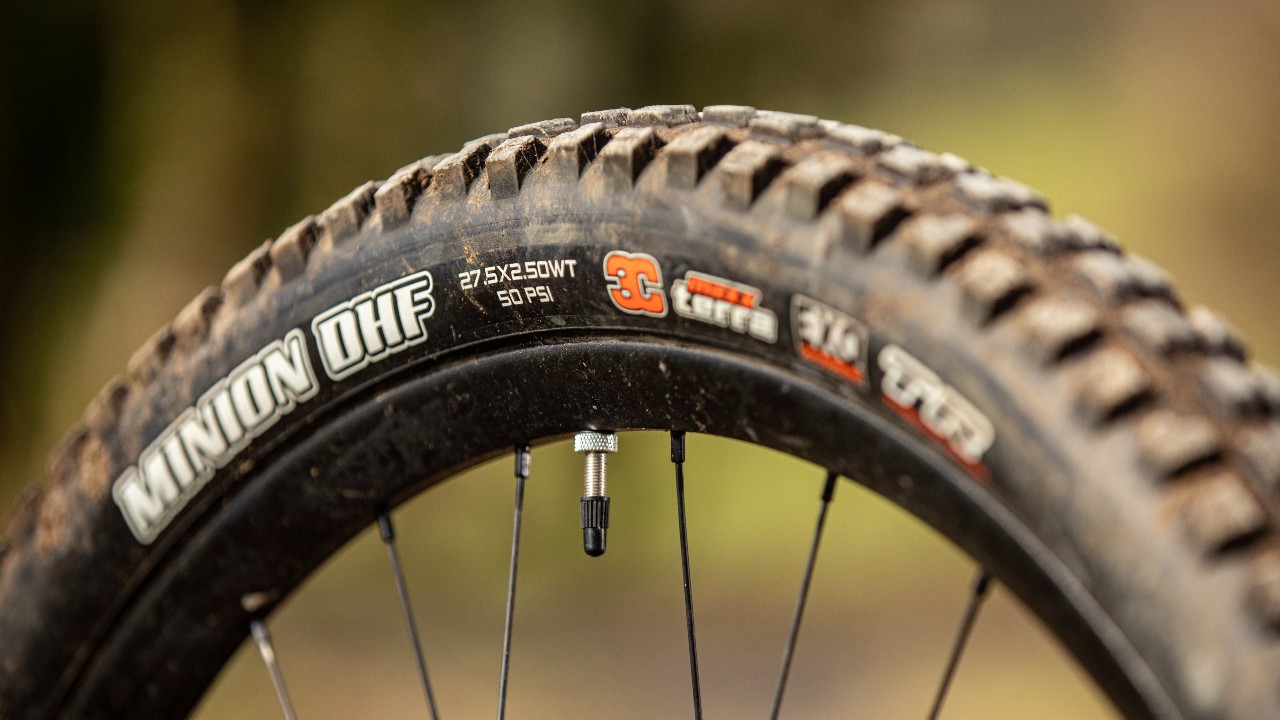Precise handling, eager ride feel, nimble - the Evil Insurgent MX has us hooked
Evil Insurgent MX 29 GX first ride review
Hit the bike park or get ready for some enduro racing with the Evil Insurgent MX 29 with, you guessed it, a mullet wheel setup. Combining a carbon chassis with 170mm of travel and coil shock, plus Evil’s notoriously cool good looks, its clearly aiming to be among the best enduro bikes out there, and based on our first impressions it may well get there.
Need to know
- Bike Park/enduro machine available with 27.5in wheels and a 180mm fork or an MX 29 configuration (29in front/27.5in rear) and 170mm fork
- Full carbon chassis with adjustable geometry and Dave Weagle DELTA suspension design using a DH-level coil shock
- Three build levels available: SRAM AXS, XO1 and the most affordable GX Eagle spec featured here
- Suspension delivers 168mm rear travel, with a wider/stiffer Super Boost + rear axle
- Smooth pedalling, urgent sprinting manners and good seated position for climbing makes it easy enough to get around on

It’s safe to say that we like the Evil Insurgent MX so far
Evil bikes look cooler than ever, but I still struggle to tell each model apart even after testing most of them since the brand’s mid 2010 makeover. Having a smaller rear wheel on the latest Insurgent MX 29 certainly helps, especially when it’s the only mullet in Evil’s range. That’s not to say it’s not still confusing, as Evil uses the same Insurgent frame to produce two versions of the bike: one with 27.5in wheels the other with MX wheels.
Ready for DH and enduro tracks
Originally a 160mm enduro machine, the latest 27.5in Insurgent packs more travel and a longer 180mm fork and targets wannabee jibbers and Rampage huckers more than purebred racers. In contrast, the MX version ridden here bolts a 29in front wheel and 170mm fork to the frame and aims the bike at the same downhill and enduro tracks as the Evil Wreckoning 29er, albeit with a smaller (quicker to turn and accelerate) rear wheel.
Whether the 27.5in Insurgent is nimbler or not, chuck this MX version about and it immediately identifies as an Evil with the brand’s familiar formula for maximising thrills and flattering skills, rather than only focusing on top speed.

SRAM G2 brakes aren’t as smooth or powerful as we’d like
Frame and suspension
It’s reflected in the geometry too, where Evil’s attitude doesn’t fully follow the long-low-slack philosophy of using length to ride ever faster, instead relying on balance and handling, rather than just being planted and stable.
With the familiar curvy carbon looks, comes the familiar DELTA link suspension. It looks complex, but is a single pivot design where the links provide a ‘dual progressive’ curve to provide support around sag, float in the mid zone to maximise traction, all with enough ramp up for bottom out resistance.
It makes flamboyant claims for a suspension curve, but I’ve yet to ride an Evil with dodgy suspension, and it’s particularly sweet here with stable, efficient pedalling, precise tracking and stacks of smooth support.

Plenty of protection to help save the frame and reduce noise
Components
Evil knows its suspension is a strong suit, so damping is prioritised at every level to eliminate compromises. As such, even the entry-level GX Eagle version has the exact same RockShox Zeb Ultimate fork and DH-level Super Deluxe shock as the mega-money SRAM AXS bike. Top-tier RockShox gear brings concessions elsewhere though, and for a £6.5K rig the cheaper SRAM G2 brakes lack sheer power and smoothness.

EXO casing isn’t tough enough for a bike of this capability
Maxxis Minion DHF tyres front and rear work well if it’s dry-ish, but thinner EXO casings aren’t robust enough for a 168mm rig. Plus, I’ve had multiple prior issues with the Super Boost Industry Nine Enduro S wheels the tyres are mounted to. So on top of the annoyingly loud freehub, bearing life is poor in UK mud and the wheels are flexy, leading to a nasty habit of the straight-pull spokes snapping.

A loud freehub isn’t a plus point
How it rides
No spokes were damaged, but my first Insurgent shred wasn’t much to write home about. Compared to the size medium 29in Wreckoning I’ve rode a ton, it felt sketchy, lacked balance and was cramped. I’d inherited the bike from someone sending it deep on massive jumps at Revs Bike Park and soon discovered near maximum damping wound on at both ends. Factor in the 10mm shorter stem and the nimble mullet felt hectic in the steering department (not helped by a stupid-wide 810mm Evil bar and sticky-out grips that struggle to fit through trees).

A stem switch and bar shortening session later, and the Evil Insurgent felt a whole lot better
More active suspension settings, 20mm sawn off the handlebar and a longer 45mm stem led to something of a Jekyll and Hyde transformation. Taken together the changes made it much easier to weighting the front end more down the steepest tracks and in turns for extra control. Switching to the X-Low geometry setting also upped performance further by boosting straight-line stability and simultaneously increasing cornering agility.
These tweaks made the Insurgent a totally different beast, and one I started to feel seriously cocky on. All Evils have smooth rear suspension off the brakes, but the ‘hoverboard’ action here is one of the best. It absolutely glides over chatter, but deeper in the travel the mid-stroke support builds so smoothly that, together with the stiff carbon frame, makes it a blast driving directional changes through your feet and really leaning the bike over in turns.
It absolutely glides over chatter
It sounds far-fetched, but by using the terrain to manual and boost, the Insurgent can even feel so smooth and composed at the tyres, there are times it feels more like surfing in waves or powder snow, rather than just a clumsy human perched on a chunk of carbon rolling on dirt.
What’s also noticeable, compared to full 29ers, is the touch of extra speed injected in the first couple of revolutions of the pedals. This added acceleration of the 27.5in rear wheel can also be used to surge (no pun intended) up to speed on flatter trails too if your timing is spot on when loading tyre edges and berm exits.

Full review coming soon – watch this space
Flat out, on hammered straights or continuous rocks, even with nearly 170mm travel, the short 430mm back end can get a bit too lively, so you need more spring support to stabilise rider weight. Fast berms also overload the back end with the stock spring rate, with a slight rearward weight bias and light hands at the apex of deep turns.
This is a common MX trait in my experience; one of potentially carving turns faster, but also more rider adjustment needed to maintain sufficient front-end load right through the turn. Changing to a firmer 500lb spring (for my 82kg weight), fully cured both tendencies and aided to overall balance.
Fully dialled and with weight distribution sorted, the Insurgent MX rules for messing about. It pedals and sprints really efficiently so picking up the pace is easy, and on fun tracks that I know like the back of my hand, it was as if it could read my mind in terms of going exactly where I wanted it to at lightning speed.
Verdict
While a more point-and-shoot machine would feel safer at the highest speeds, the Insurgent MX excels at tracking without numbing terrain. It’s also precise and eager to switch direction. It’s probably not the ultimate machine for blind enduro racing on tracks out to kill you, but, honestly, I couldn’t care less. The instantaneous handling and whipped cream suspension had me hooked, so it looks like I’ll need to dream up another elaborate excuse for this Evil to stay in my hands just a little longer.
















